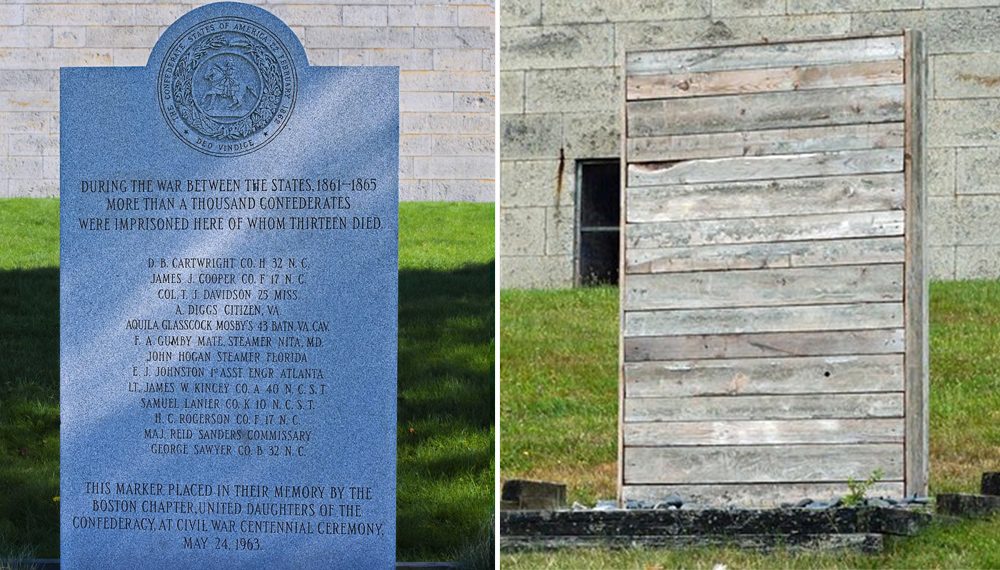Advertisement
Boston's Only Confederate Memorial Will Move Out Of Public View

Boston's only Confederate monument will go into storage, perhaps as soon as next week. The monument, which is on Georges Island in Boston Harbor, is a memorial to 13 Confederate prisoners of war who died at the island's Fort Warren.
It has been boarded up since June while the state considered its fate in the context of growing nationwide protests against Confederate symbols. That decision-making process involved both state and federal agencies because of the island's status as a national historic site. Many Confederate artifacts elsewhere have come down in the wake of the violent attacks on counter-protesters in Charlottesville.
The state Department of Conservation and Recreation will move the granite block soon after the harbor islands close to tourists this weekend, Secretary of State William Galvin said. The Massachusetts Historical Commission, which reports to Galvin, had to approve the move because of the island's historical significance.
"The monument itself is not particularly historic," Galvin said in a phone interview. "It was only placed there in 1963."
Boston's now-defunct chapter of the Daughters of the Confederacy put it up then, at a time when they and other groups were erecting many Confederate monuments around the nation in response to the civil rights movement. Galvin said the state may send the Georges Island "cenotaph, which is the technical term for what it is," back to the national Daughters organization.
"If they wish to retrieve it, we could make arrangements with them," Galvin said.
Meanwhile, it will stay tucked away in the state archives.
"We’ve agreed to take it because we don’t want to see it destroyed," he said. "We’re not trying to destroy it, but we want to make sure that, once it was removed, it was kept in a safe place."
When the monument moves to that safe place in the archives, it will also be out of sight.
"It will not be on public display," Galvin said.
